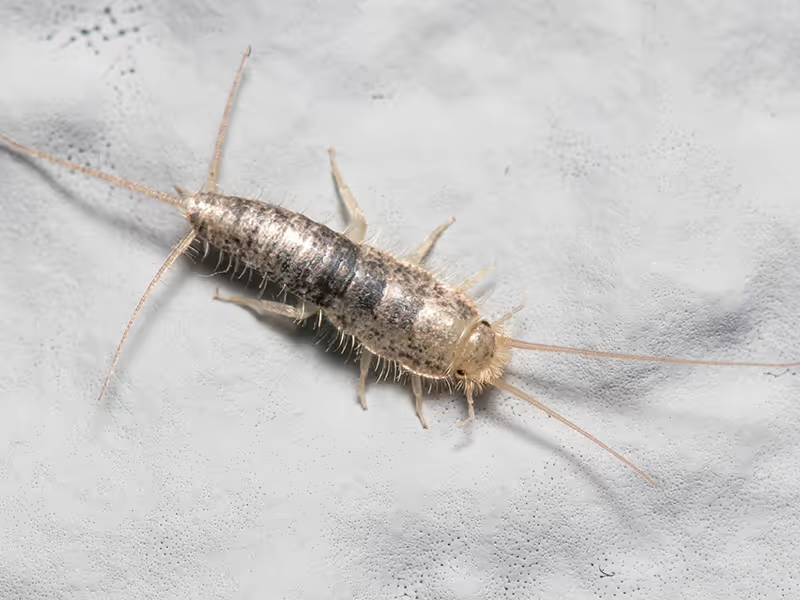Silverfish are small, slender insects measuring about ½ to ¾ inch long. They’re silvery-gray in color, with flat, carrot-shaped bodies that are wider at the front and taper toward the back. On their heads, you’ll notice two thin antennae that can be as long as or longer than their bodies. At the rear, they have three tail-like appendages that resemble antennae. Their bodies are shiny and almost armor-like, and they have six pale legs. Unlike many insects, silverfish don’t have wings.

Silverfish and firebrats look very similar, so it’s easy to confuse them. Both have tapered, flat bodies, similar size, and no wings. However, there are some key differences:
Quick recap: Silverfish are shiny and prefer cooler, damp areas. Firebrats are speckled and love the heat.
Silverfish have a surprisingly broad diet. They prefer starchy materials and will feed on:
Basically, if it contains starch, they’ll nibble on it.
Silverfish thrive in environments that offer three key conditions: moisture, warmth, and food. If your home provides these—along with easy entry points—you could develop a silverfish problem.
Silverfish can sneak inside in several ways:
Silverfish are excellent climbers and can wriggle into very small spaces, making them difficult to keep out without regular exterior pest treatments.
Silverfish seek warm, humid places with access to food and shelter. Common hiding spots include:
Because they hide in hard-to-reach areas, silverfish can be tough to control.
Yes. Silverfish require humidity levels above 75% to thrive. Lower humidity slows their reproduction, and very low humidity will eventually dehydrate and kill them.
Silverfish chew holes in a variety of materials, including:
The damage is often mistaken for natural wear and tear, allowing infestations to go unnoticed. Silverfish can also contaminate food when they get into packaging.
No. Silverfish don’t bite, sting, or spread diseases. They pose minimal health risk and are considered more of a nuisance than a danger.
Yes. Silverfish can attract predators such as spiders and centipedes, which feed on them.
Not necessarily. Silverfish are highly mobile, so spotting one doesn’t always mean there’s an infestation. However, it does indicate the presence of entry points and favorable conditions. Ignoring them could allow a larger problem to develop over time.
The most effective way to eliminate silverfish is to sign up for a home pest control plan that targets these pests along with other common household insects and rodents. At Harbor Pest Control, we offer year-round pest control services designed to eliminate existing activity and prevent new infestations. As a locally owned and family-operated company, we’re ready to help you protect your home and family!
Prevention involves a two-part approach: treating the current infestation and creating a barrier to prevent reinfestation. A professional pest control plan provides both solutions, along with ongoing maintenance to keep silverfish and other pests away.
If you’re concerned about silverfish in your San Diego home, contact Harbor Pest Control today for a customized pest management plan that works.





Helpful Tips & Info